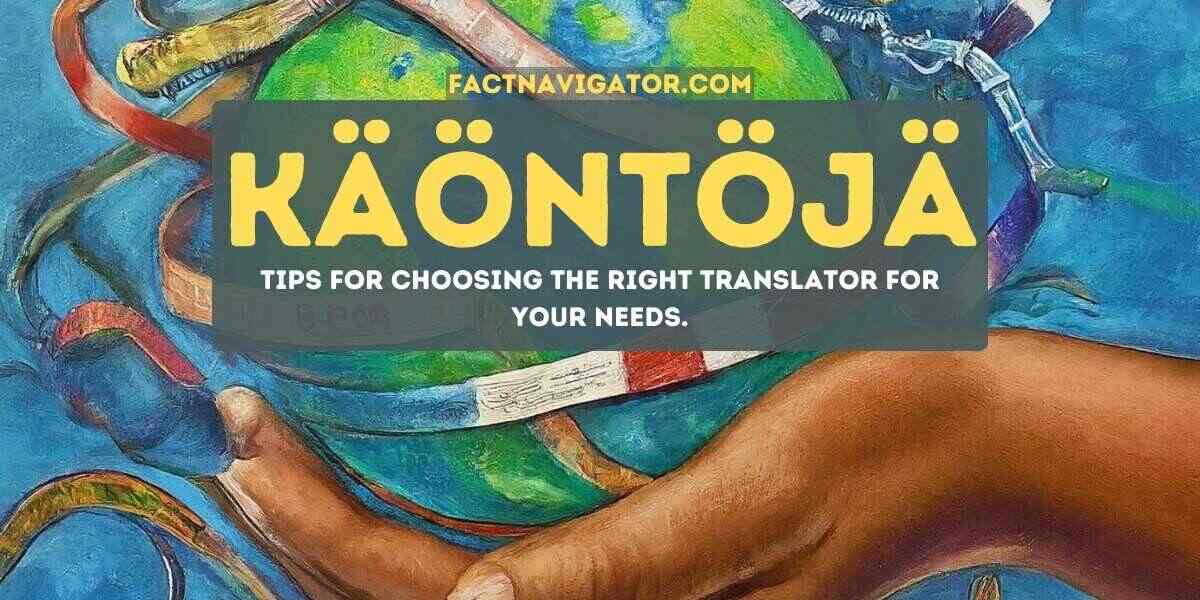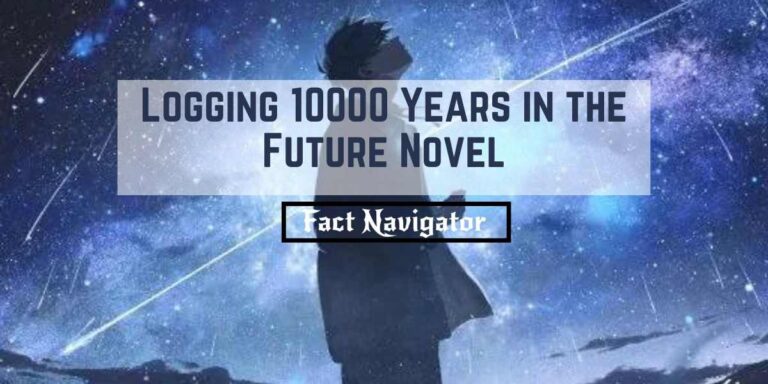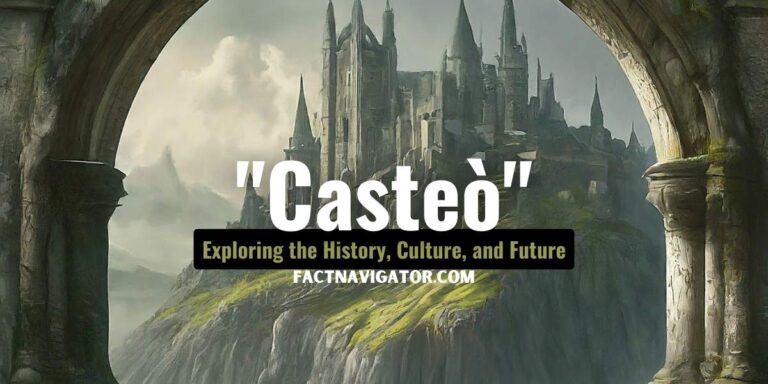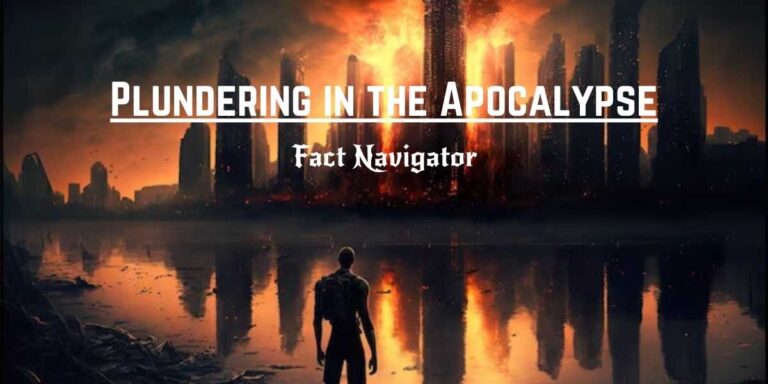käöntöjä – Your Guide to Finnish Translations!

“Käöntöjä,” the Finnish word for translations, plays a vital role in today’s globally connected world. Translations bridge language and cultural divides, enabling meaningful communication, collaboration, and knowledge sharing across borders.
Whether in business, science, technology, or the arts, high-quality translations ensure that ideas retain their original intent, nuance, and impact. As both machine and human translation methods evolve, the demand for accuracy, cultural sensitivity, and expertise grows. In Finland and beyond, käöntöjä remains a cornerstone of global interaction, making it more essential than ever before.
What are käöntöjä?
“käöntöjä” is the Finnish word for translations. In today’s increasingly interconnected world, the ability to effectively communicate across languages is more crucial than ever. Translations bridge cultural and linguistic divides, fostering understanding, collaboration, and knowledge exchange.
Importance of High-Quality Translations:
High-quality translations go beyond simply conveying the literal meaning of words. They accurately capture the essence, nuance, and intent of the original text, ensuring clear and impactful communication. This is especially important in:
- Business: Accurate translations are essential for effective marketing, communication with international partners, and navigating legal and financial documents.
- Technology: Flawless translations are crucial for user manuals, software localization, and ensuring the accessibility of technology for a global audience.
- Science and academia: Precise translations are vital for disseminating research findings, fostering international collaboration, and ensuring the advancement of knowledge across borders.
- Creative industries: Skilled translations allow authors, artists, and filmmakers to share their work with a wider audience, enriching cultural exchange and appreciation.
The Finnish Language Landscape and Its Significance:
Finnish, a unique member of the Uralic language family, is spoken by over 5.5 million people primarily in Finland. While English proficiency is high in the country, Finnish remains an essential part of its cultural identity and national heritage.
Furthermore, Finland actively participates in international cooperation and trade, making high-quality translations into and from Finnish critical for fostering connections and driving economic growth.
By understanding the significance of “käöntöjä” and their role in today’s globalized world, we can appreciate the importance of accurate, nuanced, and effective translations in facilitating communication, understanding, and collaboration across cultures and languages.
Types of käöntöjä: Choosing the Right Solution for Your Needs:
In the diverse world of translations, finding the right approach for your specific needs is crucial. Here, we delve into the various types of “käöntöjä” available, empowering you to make informed decisions:
Professional Translation Services:
Offering the highest level of accuracy and cultural sensitivity, professional translation services are ideal for critical projects requiring precision and expertise. These services typically specialize in different areas, ensuring a tailored approach to your specific content:
- Legal translation: Demands meticulous attention to detail and in-depth understanding of legal terminology and nuances across languages.
- Medical translation: Requires translators with specialized knowledge of medical terminology and cultural sensitivities related to healthcare.
- Technical translation: Ensures accurate and clear communication of technical concepts, often involving specific industry jargon and terminology.
- Financial translation: Demands expertise in financial instruments, regulations, and reporting standards across different markets.
Choosing the Right Translator:
Selecting the right translator hinges on several factors:
- Area of expertise: Match your project’s specific requirements with the translator’s proven experience in the relevant field.
- Language proficiency: Ensure the translator possesses native-level fluency in both the source and target languages.
- Cultural understanding: Opt for translators familiar with the cultural context of both languages to avoid potential misunderstandings.
- Qualifications and experience: Look for translators with relevant certifications and a proven track record of success in handling similar projects.
Machine Translation:
Machine translation (MT) has emerged as a fast and cost-effective option for translating large volumes of text. However, it’s crucial to understand its limitations:
- Accuracy: While MT is constantly improving, it can still struggle with complex sentence structures, idiomatic expressions, and cultural nuances.
- Style and tone: MT often lacks the ability to capture the intended style and tone of the original text, potentially impacting the overall message.
When to Consider Using Machine Translation:
MT can be a suitable option for:
- Informational content: Translating general information or non-critical materials where absolute accuracy is not paramount.
- Drafting and pre-editing: Providing a rough translation for human editors to refine and ensure accuracy.
Crowdsourcing and Community Translation:
Crowdsourcing platforms leverage the collective knowledge of online communities to translate content. This approach offers:
- Cost-effectiveness: Can be a budget-friendly option for certain projects.
- Diversity of perspectives: May provide insights from various cultural backgrounds.
Potential Drawbacks of Crowdsourcing Translation:
- Quality inconsistency: The accuracy and quality of translations can vary significantly depending on the expertise of individual contributors.
- Lack of control: Limited control over the translation process and potential for inconsistencies in style and tone.
Ultimately, the best type of “käöntöjä” for your project depends on your specific needs, budget, and desired level of accuracy. By understanding the different options available and carefully considering the factors involved, you can make informed decisions that ensure effective communication across languages and cultures.
Finding the Right Translation Service:
Selecting the right translation service is essential for ensuring your “käöntöjä” are accurate, effective, and meet your specific needs. Here are some key factors to consider:
Experience and Qualifications of the Translators:
- Look for translators with proven experience and relevant qualifications: Choose a service that employs translators with demonstrable experience in your specific field (legal, medical, technical, etc.). Certifications from recognized translation organizations can further indicate their expertise.
Specialization in Your Required Field:
- Seek services specializing in your industry: Translators with in-depth knowledge of your field’s terminology, cultural nuances, and specific requirements can deliver more accurate and impactful translations.
Pricing and Turnaround Time:
- Compare pricing structures and turnaround times: Different services offer various pricing models and turnaround times. Consider your budget and project deadlines when making your selection.
Client Reviews and Testimonials:
- Read client reviews and testimonials: Checking online reviews and testimonials from previous clients can provide valuable insights into the service’s quality, reliability, and customer satisfaction.
Tips for Getting the Best Results from Your Translator:
Once you’ve chosen a translation service, here are some tips to optimize the collaboration and ensure successful results:
Providing Clear Instructions and Context:
- Offer clear instructions and context: Clearly outline your project goals, target audience, desired tone, and any specific terminology or style preferences. Providing relevant background information about the content can also aid the translator’s understanding.
Proofreading and Revision Process:
- Establish a clear proofreading and revision process: Discuss the revision process beforehand and ensure you have the opportunity to review and provide feedback on the translated text. This collaborative approach helps refine the translation and guarantee it meets your expectations.
By carefully considering these factors and following these tips, you can effectively navigate the world of “käöntöjä” and find the right translation service to fulfill your specific needs. Remember, choosing the most suitable service can significantly impact the quality, accuracy, and overall effectiveness of your translated content.
What does the future of käöntöjä look like in the age of innovation and expertise?
The landscape of “käöntöjä” is constantly evolving, driven by technological advancements and a growing emphasis on effective communication across borders. Here, we delve into some key trends shaping the future of translation:
Advancements in Machine Translation Technology:
Machine translation (MT) technology is undergoing rapid development, offering increasingly sophisticated algorithms and improved accuracy. These advancements hold the potential for:
- Faster and more cost-effective translations: MT can handle large volumes of text efficiently, potentially reducing translation costs and turnaround times.
- Accessibility for low-resource languages: MT advancements can bridge the gap for languages with limited translation resources, promoting wider accessibility to information and communication.
However, it’s crucial to remember that MT is not a replacement for human expertise. While it can be a valuable tool for specific tasks, it still struggles with:
- Nuance and cultural understanding: MT often fails to capture the subtle nuances of language and cultural context, leading to misinterpretations and inaccuracies.
- Creative content and complex language: MT struggles with translating creative content and complex language structures, requiring human intervention for effective results.
The Increasing Demand for Human Expertise in Specific Domains:
Despite the rise of MT, the demand for skilled human translators remains high, particularly in specialized fields:
- Medical translation: Requires deep medical knowledge and cultural sensitivity to ensure accurate communication of critical information.
- Legal translation: Demands expertise in legal terminology and nuances to maintain the accuracy and legally binding nature of translated documents.
- Technical translation: Involves translating technical documents like manuals and software, requiring knowledge of specific terminology and technical concepts.
Human translators bring a unique blend of expertise, cultural understanding, and critical thinking skills that are irreplaceable in these domains.
The Importance of Cultural Sensitivity and Localization:
In today’s interconnected world, cultural sensitivity and localization are paramount for effective communication. This involves:
- Adapting translations to the target audience’s cultural context: This ensures the message resonates with the audience and avoids potential misunderstandings.
- Considering cultural nuances: Translators must be mindful of cultural references, humor, and idioms that might not translate directly, requiring adaptation for the target audience.
By effectively combining technological advancements with human expertise and cultural sensitivity, the future of “käöntöjä” promises to be a dynamic landscape fostering seamless communication and understanding across languages and cultures.
FAQS:
Why is choosing the right type of translation service crucial for different industries?
Different industries—like legal, medical, or technical—require translators with domain-specific knowledge. A mismatch can lead to errors, misinterpretations, and even legal or safety consequences. Tailoring the translation approach ensures accuracy, compliance, and cultural relevance.
How does cultural sensitivity influence the effectiveness of a translation?
Cultural sensitivity ensures that messages resonate appropriately with the target audience. It helps avoid miscommunication, offense, or confusion by adapting idioms, humor, and references that may not directly translate across cultures.
What are the risks of relying solely on machine translation for professional documents?
While fast and cost-effective, machine translation lacks emotional nuance, contextual awareness, and accuracy with idioms or legal/technical language. Sole reliance can result in errors that harm brand image or misrepresent critical information.
How can businesses benefit from professional translation services in global markets?
Professional translations help businesses localize content, build trust, and connect authentically with international audiences. High-quality translations reflect professionalism and cultural understanding, which are key to brand reputation and customer engagement.
When is it appropriate to use community or crowdsourced translation methods?
Crowdsourcing can work for informal, community-driven content or large volumes of non-critical material. However, it’s less suitable for specialized fields due to potential quality inconsistencies and a lack of control over style and accuracy.
Conclusion:
The world of “käöntöjä” offers a powerful bridge for communication and understanding across languages and cultures. By understanding the different types of translations available, carefully selecting the right service, and embracing the evolving landscape, you can ensure your message reaches its target audience effectively.
Seeking Professional Help for Your Translation Needs:
While navigating the various options for “käöntöjä” can seem daunting, remember that professional translation services offer invaluable expertise and ensure:
- Accuracy and quality: Professional translators possess the necessary skills and experience to deliver accurate and nuanced translations that meet your specific requirements.
- Domain expertise: Choosing a service specializing in your field guarantees they understand the relevant terminology and cultural context, leading to impactful translations.
- Cultural sensitivity: Professional translators can adapt your message to resonate with the target audience, avoiding potential misunderstandings and ensuring clear communication.
Whether you require legal documents translated with precision, technical manuals adapted for international audiences, or marketing materials that culturally connect with your target market, seeking professional help guarantees effective communication and successful outcomes.
By leveraging the power of “käöntöjä” and partnering with skilled professionals, you can bridge linguistic divides, foster collaboration, and unlock a world of opportunities on a global scale.
Related post:






